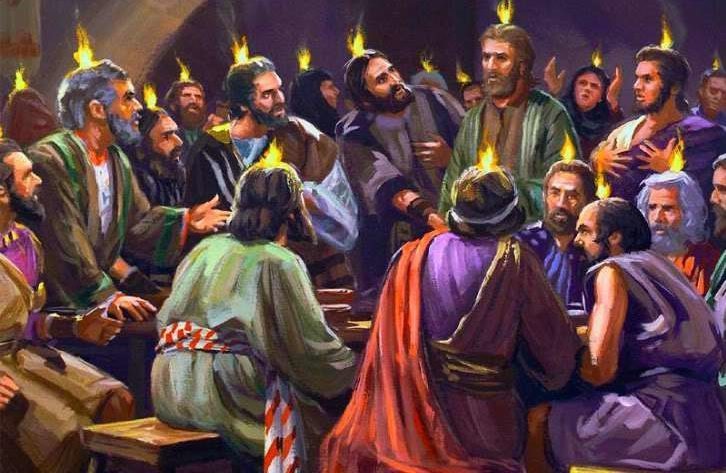Services at St Michael and All Angels (refer to smlcc.com.au for times)
Sunday 30 June, 2nd Sunday after Trinity
Colour: Green
Intent: God as Light

Sunday 7 July, 3rd Sunday after Trinity
Colour: White
Intent: God as ruler of the angels
Sunday 14 July, 4th Sunday after Easter
Colour: Green
Intent: God as Love
Sunday 21 July, 5th Sunday after Trinity
Colour: Green
Intent: God as Peace
Sunday 28 July, 6th Sunday after Trinity
Colour: Green
Intent: Steadfast service
New visions of reality
Up to approximately the 17th century the “universal wisdom” and picture of reality, promulgated by the Church, which linked all of Christendom was based on Aristotle’s concepts of “natural philosophy” and his methods for trying to determine the fundamental nature of reality. Aristotle did not experiment. He observed the world and proposed reasons why natural phenomena occurred the way they did. For example, he stated that heavy objects dropped through the air faster than light objects because heavy things have a greater “affinity” for being on the ground. The demonstration of dropping a 30 mg feather and a 1.32 kg hammer on the moon, and the two objects reaching the moon’s surface simultaneously, was a dramatic demonstration that this is not true. This occurred during Commander David Scott’s Apollo 15 moon walk in 1971. Rather Galileo’s proposition, based on experiments, that all objects fall at the same speed, only being delayed by air resistance is valid. Galileo also looked at the moon through his telescope and noticed that it is not a perfect sphere, as it should have been according to the philosophy of Aristotle and the Roman Catholic Church.
Thus a fundamental split began between the acceptance of the world view of a famous person such as Aristotle and the generation of theories based on the gathering of data from experiment. Since we are all now born into a so-called scientific world, we generally take for granted the scientific approach of experimentation and collection of evidence for the formation of our concepts of “reality”. This “reality” can be labelled materialistic as no unknown force or “vital energy” is accommodated in modern scientific theories.
Since the start of the 20th century other views have been emerging such as those of P.D. Ouspensky with his “New Model of the Universe” (1932), Fritjof Capra’s “Tao of Physics” (1975) and Rev. Fr Bede Griffiths’ “A New Vision of Reality” (1984). The new ideas emerging are that all the world is interconnected, that the holistic view of the Tao is the underpinning of quantum physics. Teachings of Eastern Mysticism are also increasingly supported by western psychologists. In short, views such as these reintroduce a spiritual dimension, removed during the 17th century Enlightenment, and now based, somewhat ironically, on 21st century science.
The “reality” is that materialism, which demands a physical explanation for everything, will not lead to a meaningful life or lasting satisfaction. Materialism is not answering all our heart-felt questions or satisfying the universal human hunger for something more. As our liturgy says, “Our hearts are ever restless till they find their rest in Thee”. Other cultures in India, Asia and the far East have for centuries explored mankind’s inner resources to get answers to deeper questions, answers that lead to inner contentment. The new reality suggests that people take inner searching on board, not just haphazardly, but guided by teachers who have travelled an inner path before, and assisted by the inspiration and guidance from sacred writings, including the Bible.
In our church year we have just passed through Easter followed by Ascension and then the most dramatic life-changing event of Pentecost where the Apostles, who were on their own spiritual journeys, suddenly experienced a complete change in their world view. This was the slingshot that propelled the Apostles from the state of being frightened, dispirited and lost out into the world as courageous, effective and compelling spiritual leaders. They now travelled all over the Mediterranean, spoke with conviction and reached the hearts of thousands of people. Such an event, if experienced today, would dominate all forms of public and private media, worldwide, for a considerable period. For us, individually, we must now look to other forms of “verification”, in the spirit of Galileo, by turning inwards and exploring our developing inner senses and perceptions.

Trinity Sunday has just passed, heralding the second half of the church year where we put into practice all the spiritual lessons to which we have been exposed starting from Advent. In the Epistle for Trinity Sunday we read of the vision of St John the Divine, recounted with all the rich symbolism that is one of the tools we can use on our personal spiritual journey within. Traditionally the four beasts of the vision represent Matthew, Mark, Luke and John. St Matthew is the “man”, indicating that the reasoning ability of man should be used to explore paths leading to enlightenment and union with God. St Mark is the “lion”, indicating that courage and strength are needed to keep us on the spiritual path and propel us through all obstacles that arise. St Luke is the “calf” (or ox), linked to sacrifice, in this case the sacrifice of our “lesser self” in order to take on our true “spiritual self” – in effect our “resurrection”. St John is the “eagle”, ever looking towards eternity in the distance and not losing sight of the ultimate destination.

As we progress now through the Trinity Sundays, each with deep insights embedded in the weekly “intents”, we can try to develop our own spiritual tools by drawing on many sources and harvesting their rich inner meaning. This inner meaning is what Jesus was referring to when he said, “But whoever drinks the water I give him will never thirst. Indeed, the water I give him will become in him a fount of water springing up to eternal life.” (St John 4:14)
With God's blessing

|
|